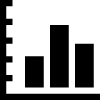Spending on direct-to-consumer pharmaceutical ads rose 9% to $5.6 billion in 2016, in part fueled by a 16% boost in spending from Bristol-Myers Squibb, according to data from Nielsen.
Pfizer and Bristol-Myers Squibb again took the two top spots among drugmakers, spending $1.1 billion and $458 million, respectively, on DTC ads. AbbVie, Eli Lilly, and Allergan rounded out the top five DTC spenders. The Nielsen figures include business to business, outdoor, cinema, television, magazine, newspaper, and radio media spend, but not digital.
See also: Merck’s DTC ad for Keytruda hints at more cancer brands turning to TV
Bristol-Myers Squibb doled out more than $170 million on its immuno-oncology therapy Opdivo alone in 2016, the only cancer drug among Nielsen’s top 20 DTC spenders. It’s traditionally rare for pharma companies to use DTC to promote oncology brands, but the Opdivo campaign along with a competing campaign for Merck’s Keytruda, that launched in January, may be changing that paradigm.
The other three brands with the most spending in 2016 were: Eli Lilly’s Trulicity for diabetes, and Pfizer’s Lyrica for diabetic nerve pain and fibromyalgia, and Xeljanz for rheumatoid arthritis.
See also: Allergan to boost investment in DTC for Kybella
Pfizer’s DTC spend spanned eight indications and multiple therapeutic categories, with 6 of its brands making it on the list of the top 20 spenders. This includes Xeljanz, Lyrica for fibromyalgia and diabetic nerve pain, Chantix, Eliquis for atrial fibrillation and deep vein thrombosis, Viagra, and Prevnar 13. Eliquis is co-promoted with Bristol-Myers Squibb.
Bristol-Myers Squibb, on the other hand, concentrated its DTC spending on just three indications in the top 20 brands: Opdivo and Eliquis for atrial fibrillation and deep vein thrombosis.
See also: The FDA targeted DTC, video, unapproved drug promotion in 2016
Newer brands to the top 20 list in 2016 include Novartis’ heart-failure drug Entresto ($122 million), Novo Nordisk’s diabetes treatment Victoza ($128 million), Celgene’s psoriasis drug Otezla ($96 million), and Eli Lilly’s diabetes drug Trulicity ($184 million).
The Celgene ad is under scrutiny by regulators. The drugmaker received an untitled letter from the FDA’s Office of Prescription Drug Promotion last year over its DTC ad for Otezla, which said the ad’s use of loud music and attention-grabbing visuals downplayed the risk information presented therein.
When broken down by channel, pharma companies spent less on cinema, newspaper, and radio media last year but sharply increased their investment in outdoor media by 552%. Business to business, television, and magazine media spend also grew, by 31%, 11%, and 6%, respectively.
| Company | Total DTC Spending 2016* |
|---|---|
| Pfizer | $1.19 billion |
| Bristol-Myers Squibb | $458 million |
| AbbVie | $433 million |
| Eli Lilly | $414 million |
| Allergan | $352 million |
| Johnson & Johnson | $291 million |
| Merck | $285 million |
| Novartis | $254 million |
| AstraZeneca | $225 million |
| Novo Nordisk | $206 million |
| Amgen | $193 million |
| GlaxoSmithKline | $165 million |
| Sanofi | $123 million |
| Takeda Pharmaceuticals | $110 million |
| Gilead Sciences | $103 million |
| Celgene | $96 million |
| Valeant Pharmaceuticals International | $94 million |
| Ironwood Pharmaceuticals | $92 million |
| Otsuka | $92 million |
| Sumitomo | $91 million |
Source: Nielsen. *excludes digital spend
Correction: An earlier version of this article misstated that Lyrica is indicated to treat diabetes. It treats diabetic nerve pain.







